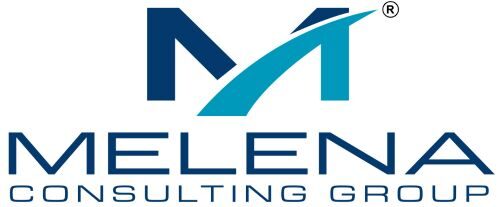Recognition is powerful.
It engages employees and boosts performance — but only when done right.
Employee Recognition Motivates
In the previous post, I shared the research conducted by Krüger & Rootman on the seven elements of employee motivation. [1]
In this post, we dive into the second element: recognition and feedback.
Recognition and Feedback
Krüger and Rootman’s research determined that recognition and feedback are the most influential of the seven elements on employee motivation, only surpassed by meaningful work.[2]
Recognition and feedback let employees know their contributions at work matter and make a difference.
Why Recognition Matters
It Builds Resilience
When leaders make employees feel valued, appreciated, and supported, they positively impact overall employee satisfaction and mental health. This impact empowers and mentally strengthens employees, giving them resilience against job demands and the associated pressures and stress.[3]
The more leaders build employees’ resilience through recognition and positive feedback; the more employees have the strength and motivation to handle the challenges that come their way.
It Improves Customer Service
Employee recognition is also one of the most powerful tools managers and supervisors have to improve customer satisfaction. It satisfies and motivates employees who, in turn, provide stronger customer service.[4] And satisfied customers increase your organization’s bottom line.
Reinforces Organizational Priorities
Recognition reinforces your organization’s expectations, priorities, and values. By recognizing employees, managers and supervisors send a clear message about what really matters.
Effective Employee Recognition
For recognition and praise to be effective, you can’t let it go on autopilot. Nelson (2001) determined that the most powerful employee recognition is immediate, valuable to the employee, and provided for real accomplishments.[5]
When you recognize employees, be timely and specific and do it for something that has real meaning.
Timely, Specific, and Meaningful
As soon as you observe great performance, take the time to give recognition and praise. Point out the specific action and why it is worthy of praise. Avoid relying on easy phrases like “great job” and “good work.” They don’t sound sincere or meaningful.
For recognition to have an impact, you will need to exert a little more effort and add the specifics. For example, you may write something like: “Jane, thank you for dropping everything to help us meet the grant application deadline! I know it was a last-minute request, and yet you jumped right in with a cheerful attitude. I truly appreciate your teamwork and expertise in helping us acquire the funds to help more families in need!”
This takes more time and thought. However, it lets Jane know her contribution and sacrifice didn’t go unnoticed, and they made a significant difference.
Frequent
Recognition and positive feedback need to be frequent. It’s not enough to recognize employees at the annual employee recognition event. Even once a quarter and once a month are insufficient.
So How often should employees receive recognition?
Gallup says at least every 7 days. However, the more frequent, the better — as long as it’s sincere, specific, and meaningful.
To promote more frequent recognition and praise, build it into your culture. Promote a continuous flow from supervisor to employee, employee to supervisor, and peer to peer so that it fills the atmosphere.
You must establish a culture of gratitude.
Personalized
Powerful recognition is personalized. One size doesn’t fit all.
Ask individuals what type of recognition is meaningful to them.
When it comes to formal recognition, some employees may be thrilled to receive it in the spotlight of a big employee recognition event. Others would be horrified by the public display.
Some employees prefer money, whereas their colleagues may enjoy some time off.
Recognition that doesn’t meet individual needs may be ineffective. Even worse, it can have disastrous consequences and demotivate the employee.
Diverse
Recognition doesn’t have to be costly, and it can take on a variety of forms.
It can be as simple as an impromptu “thank you” e-mail, a brief hand-written note, or a verbal acknowledgment. It can also be planned, structured, and formalized.
You can recognize individuals, units, and the entire workforce.
The bottom line is that employees need to feel that their contributions are meaningful, acknowledged, and appreciated.[6]
Recognition comes naturally to some but is not as easy for others. If you find yourself in the latter group, you can intentionally develop a mindset of praise.
At first, you may need to add reminders to your calendar to recognize and praise employees. But as you intentionally practice recognition and positive feedback, it will become part of who you are as a leader.
About the Author

SYLVIA MELENA is the Principal of Melena Consulting Group, a leadership and organizational development consulting firm. She is also the two-time international award-winning and best-selling leadership author of Supportive Accountability: How to Inspire People and Improve Performance and its Spanish translation, Responsabilidad solidaria: Cómo mejorar el rendimiento laboral por medio del apoyo.
References: [1] Krüger, J. & Rootman, C. (2010). How do small business managers influence employee satisfaction and commitment? Acta Commercii,10(1). pp. 59 – 72. Retrieved from http://www.actacommercii.co.za/index.php/acta/article/viewFile/114/114. Creative Commons License. [2] Krüger & Rootman, 2010. [3] Jessen, J.T. (2010). Job satisfaction and social rewards in the social services. Journal of Comparative Social Work, 5(1), pp. 1 – 18. Retrieved from: http://journal.uia.no/index.php/JCSW/article/view/215/150. Creative Commons License. [4] Skudiene, V., Everhart, D. D., Slepikaite, K., & Reardon, J. (2013).Front-line employees’ recognition and empowerment effect on retail bank customers’ perceived value. Journal of Service Science 6(1), pp. 105 – 116. DOI: http://dx.doi.org/10.19030/jss.v6i1.8241. Creative Commons License. [5] Skudiene et al., 2013. [6] Krüger & Rootman, 2010.






